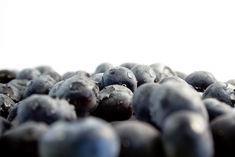
Output from Argentina’s three main production regions is expected to be on a par with last season, according to new data.
The Argentinean Blueberry Committee has announced its perspectives for the 2010/11 season, anticipating a similar production output to last year.
Based on historical data and third party information, the country’s three major blueberry production regions - Tucumán, Concordia, and Buenos Aires - are to produce just under 12,000 tonnes this season.
Argentina’s blueberry season begins in September with fruit from Tucumán, followed by Concordia during October and peaking in November with supplies from Buenos Aires.
The crop in Tucumán region is forecast to rise by almost 30 per cent to 4,400 tonnes despite two (short and light) frosts on 6 August and 15 August in the late production areas.
The accumulated losses caused by the frost represent 15 per cent of the Tucumán crop, or five per cent of Argentina’s total production.
The first harvest of the season (including early varieties Emerald, Jewel and Sapphire, and fruit from plantations with frost protection) began in week 35 with small, non-commercial volumes. The second round of harvesting got underway in week 36.
Harvesting on those plantations without frost protection is estimated to start in week 40/41, with volume from the region peaking in week 44/45.
The Concordia blueberry harvest, meanwhile, looks set to start two weeks earlier than 2009/10 at the beginning of October depending on temperatures over the next month.
Volume is expected to be on a par with last season at about 4,500 tonnes as maximum temperatures register around 20 degrees celcius which points towards a low probability of frosts during the rest of the year.
Argentina’s final harvest in Buenos Aires is anticipated to take place between 15-25 October, reaching its peak during week 46/47.
Average maximum temperatures in late August hovered around 18 degrees (and more than half of those days exceeding 20 degrees) which have helped flowering and fruit development.
Temperatures are expected to continue increasing over the next month, promoting further fruit development and flowering.
Estimated volume for the Buenos Aires region is about 3,000t - almost the same as last season.



